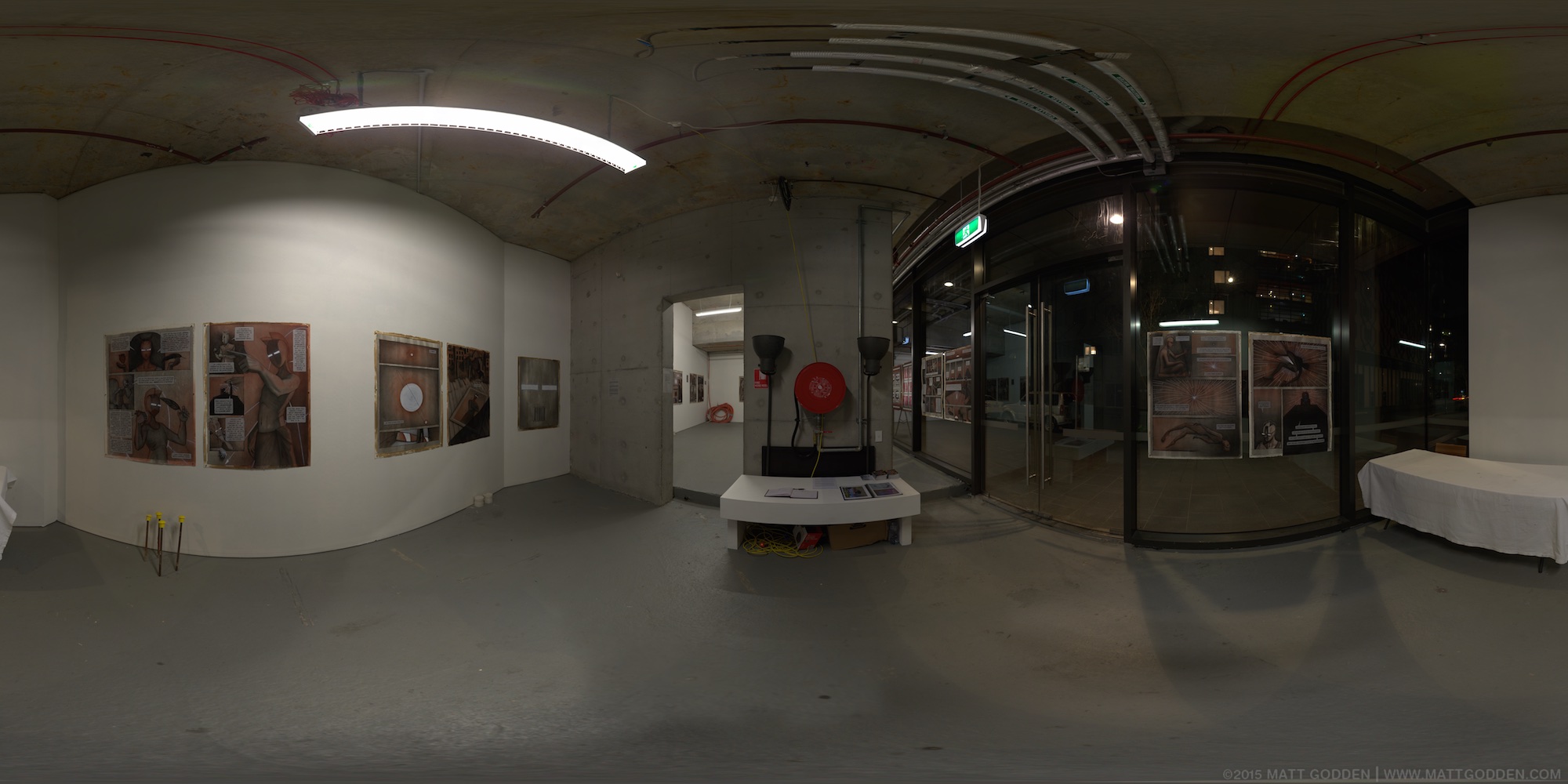Surfing The Deathline (SDL) is a serialised graphic novel I’ve been working on for a number of years. It’s gone through several mutations along the way – starting out as a 76 page oneshot book, before having an epilogue added. That original 76 pager had an extra two pages added, was split in half for publication, and the epilogue grew into two 40 page episodes.
Episode 1 & 2 were published in October 2006, and at the beginning of 2009, Episode 3 is complete and ready for launch.
So, what is it about, this thing that has eaten many years of my life?
SDL has a number of major themes, amongst which are questions about the origins and nature of terrorism, and how poverty can turn people into “terrorists” if that’s the only paying work. When it comes to being out of work, another of the ideas explored is how a lack of decent social security systems can cause the poverty that leads to crime in the first place. While terrorism has been a global issue for most of the past decade, social security policy has been a pretty major issue here in Australia. The former conservative government was very big on demonising welfare recipients. Check that, poor welfare recipients. The middle classes were given money they didn’t need hand over fist, and promptly ran up enormous debts, fuelling a housing bubble that’s biting us in the arse now.
Terrorism, poverty, oh yeah, drugs. Drugs are a pretty big issue in this work. From the point of view of performance enhancing substances (given what a sickeningly sport-obsessed nation Australia is), questioning if they’d be illegal in the workplace if they improved mental acuity. Also, that uncomfortable question of recreational drug use, why for example are many recreational drugs against the law when they’ve been very conclusively shown to be safer than alcohol – a highly dangerous drug, from which governments earn huge amounts in tax revenue. Have a think about that, are there any intoxicating products available legally, apart from alcohol?
So, before it sounds altogether too preachy, there’s also machine intelligence. Yeah! A.I. is cool – you all saw The Matrix, and that was cool, right? Right?
Yeah, Machine Intelligence in my book is nothing like The Matrix. What I’m interested in, is that fuzzy cusp time during which machine intelligence first exceeds that of humans. It’s going to happen eventually – the acceleration of neural network software is continuing, and there’s no volume limit on the size of the hardware and sheer computational ability of a machine. That’s not to say the machines in this story are like people, far from it – they’re as alien to us as the hive will that drives an ant colony to behave like a single organism. The point being, they don’t need to be like us, to out-think us. The human brain is just an organ, like the liver. There’s nothing magical or supernatural (unless you’re a wackjob dualist) about how it generates the mind and consciousness – it’s all just neurons, chemicals and electricity. All of which can be functionally simulated in software.
It is an idea with strong support, that if one builds a system that is functionally similar to the brain, and it’s given access to the ability to sense, and manipulate its world, that intelligence will arise as an emergent phenomenon. This isn’t any different to the basic theory of human development – that children develop sentience, the theory of mind, understanding that other people are people and not objects etc as they spend more time experiencing, and manipulating their environment.
The world setting for SDL is one in which American power is waning, having lost a war to the third world over intellectual property. America itself is split into three smaller nations (east and west coast nations, and a big christian theocracy for the “red” middle). Europe is attempting to be the big power, but it’s beset with civil conflict. The third world has formed a large trading block, and is gradually pulling itself back from poverty.
So there you have it, the basic rationale behind Surfing The Deathline. There’s a fair bit more, but it’s plot-point specific, and I don’t really want to go into plot details with this explanation. If you’ve got any questions, add them as comments, and I’ll answer them as best as I can. You can check out the SDL site over here, where you can download the first episode free.
